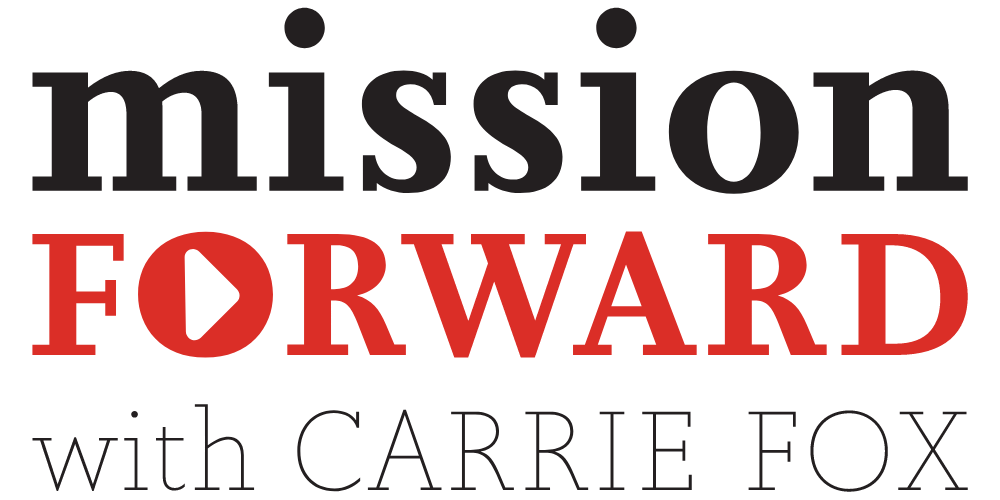Life Through a Different Lens.
This article is part of Finding the Words, a newsletter that delivers practical insights on the day’s issues.
Before our first daughter was born, a dear friend gave me and Brian some wonderful advice. He said, “Take time every day to see the world from your children’s perspective…get down on the ground, as close to those babies as you can, and look up at the world through their eyes. It will help you understand what they’re experiencing.”
The advice to experience life through a different lens was profound for me as a new parent, and I leaned on our friend’s words often as we learned to communicate and connect with our tiny humans. As it turns out, the advice wasn’t just relevant for parents of newborns. I find myself still leaning on Lenny’s words and intentionally getting as close as I can to Sophia (13) and Kate (10) so I can better see and understand the world through their eyes.
Seeing life through a different lens has felt increasingly important these days as I reflect on the findings of the just-released 2024 World Happiness Report. For the first time, the U.S. has lost its spot among the top 20 happiest countries. While people over 60 remain among the happiest (and in the top 10), people younger than 30 are among the least happy (ranking at 63 on the list).
The reason for the decline falls within 6 categories:
Social Support: According to the research, this is the best predictor of happiness. If people feel like they have at least one person they can reach out to when they're in need, they are more likely to feel secure.
GDP per capita: How much a country produces, divided by its population.
A healthy life expectancy: The physical and mental health of a country's population.
Freedom to make life choices, which plays a key role in how happy one feels.
Generosity and how charitable a country's people are.
Perception of Corruption: How corrupt are a country's government and business policies?
I can’t help but want to get as close to this generational happiness divide as I can. I want and need to understand my children’s experience and view of the world so that I can be as supportive to them as they navigate through the world. My interest in this issue extends far beyond the experiences of my own children, however. As a business owner, a school volunteer, and a university trustee, I have a vested interest in helping to close the divide, and I think you do, too.
Jonathan Haidt, social psychologist and NYU business school professor and author, whose newest book,“The Anxious Generation”came out yesterday, has a very clear assessment of the issue:
“From the decline of play-based childhoods to the rise of social media scrolling, there’s been a great rewiring of childhood that has interfered with children’s social and neurological development…we can no longer afford to ignore the psychological damage of a phone-based life.”
The gaps in how different generations see and understand the world are wide and widening. Haight advises his business school students to alter their habits,replacing morning scrolls on the phone with morning strolls in nature.He also advises that weconsider the risks associated with excessive social media use at any age,detailing in his books the very specific ways that social media causes an increase in political dysfunction.
These are not new claims, but as with any global challenge,if we don’t act on them intentionally, we’ll see the damage intensify and the gaps between generations grow wider.
So, what to do, if you’re a workplace manager, a community leader, or a parent with a vested interest in this issue?
Start by examining your own reliance on technology and social media. Take the SmartPhone Compulsion Test to see where your phone habits rank. Then, consider what active changes you can make in your own activities and habits. Getting closer to your relationship with technology can help you better understand the experience that millions of others are facing, too.
Consider active changes you can make in your workplace to ensure multiple generations have opportunities to build common ground and experiences. This Harvard Business Review article offers many prompts for consideration.
And, if you’re interested in continuing this conversation, grab a seat for our upcoming Mission Forward LIVE podcast discussion on this topic later this spring. The conversation will be recorded via Zoom, so you don’t need to be in the DC area to attend. Send me an email if you’re interested in participating.
Bottom Line: The generation gap isn’t an excuse for disconnection and engagement—it’s an invitation to get closer. If you’re leading or managing a team, take this week’s column as a prompt to initiate conversations that can help build back the social support systems we’ve been losing in recent years. Create offline spaces and opportunities to connect and build bridges that help you understand the effect of digital communications on the humans in your life. We all need to get closer to this issue and to each other. Why not start today?
This post is part of the Finding The Words column, a series published every Wednesday that delivers a dose of communication insights direct to your inbox. If you like what you read, we hope you’ll subscribe to ensure you receive this each week.






